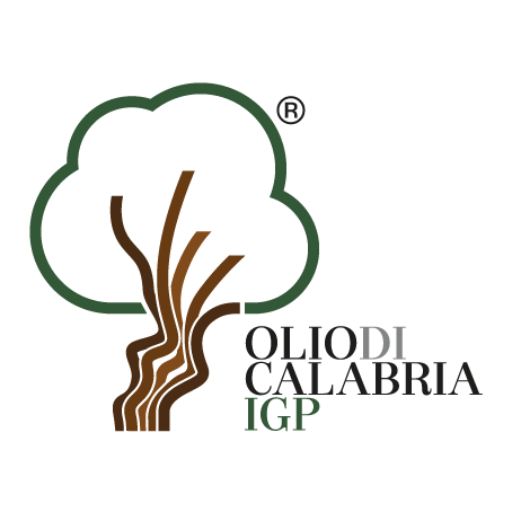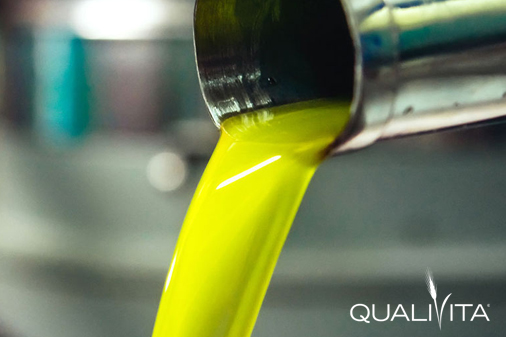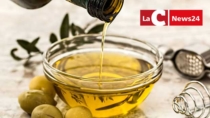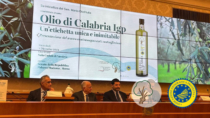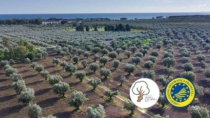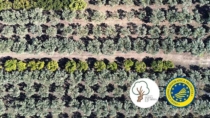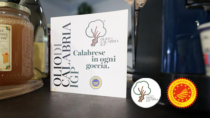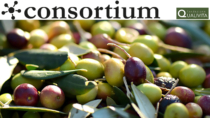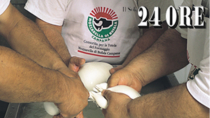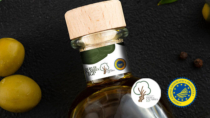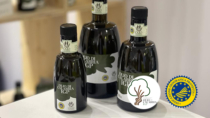Description
Olio di Calabria PGI extra virgin olive oil is obtained from the following native olive cultivars, which are the most diffused in the region: Carolea, Dolce di Rossano, Sinopolese, Grossa di Gerace, Tondina, Ottobratica, Grossa di Cassano, Tonda di Strongoli, which must make up at least 90% of the groves, individually or combined. Up to 10% of other less diffused olive cultivars may also be present.
Production Area
The production area of Olio di Calabria PGI is within the entire administrative territory of the Calabria Region.
Production Method
The olives must be harvested manually directly from the tree, by means of mechanical aids or with shakers, while it is prohibited to use olives that have fallen naturally on the ground or into permanent nets. The harvest must be carried out between September 15th and January 15th of the year the oil is produced in. The olives must be carefully transported in crates, boxes or other rigid containers that permit aeration and storage in the mill until milling, which must take place before and no later than 24 hours after harvesting. The maximum production of olives per hectare must not exceed 12 tonnes, while the maximum yield in oil is set at 20%. The olives destined for production must be then defoliated and washed with water; they cannot undergo any other treatments. Only traditional mechanical and physical processes can be used to extract the oil, so as to prevent the alteration of the fruit’s qualitative characteristics, and the maximum processing temperature permitted in the mill is 30 °C.
Appearance and Flavour
Olio di Calabria PGI ranges from green to straw-yellow in colour, with chromatic variations over time. The fruity smell of green or just-ripened olives has artichoke and floral notes, accompanied by persistent hints of freshly mown grass, leaves and tomato (green/ripe). The palate is appreciated for the harmonic structure of the ingredients, which give the oil a medium bitterness and piquancy, a characteristic that is attributed to the medium-high phenolic content.
History
Olio di Calabria PGI has been produced in this area since ancient times. Evidence of the trading of Calabrian oil, certifying the quality of the product, can be found in documents dating back to 1865, which also recount how some regions in Calabria were suppliers to the Royal House of Bourbon. The desire to improve the quality of Calabrian oil and protect its production, is evidenced by the fact that "an experimental oil mill for the improvement of olive oil” was established in Palmi (RC) by Royal Decree in 1888.
Gastronomy
Extra virgin olive oil is a highly perishable food that must be stored correctly in order to conserve its organoleptic properties. It is therefore best kept in containers made of stainless steel or other suitable materials, in a cool place away from light, at a temperature between 12° C and 20° C. Olio di Calabria PGI extra virgin olive oil is best appreciated in Calabrian dishes like pan-fried ziti with aubergine and 'nduja (a type of spreadable sausage) or fish starters.
Marketing
Olio di Calabria PGI must be sold in suitable recipients, such as dark glass, ceramic or glazed terracotta bottles or tinplate recipients, with a capacity not exceeding 5 litres. The label must bear the product logo. The specific guarantee mark, which consists of a unique alphanumeric code that ensures the traceability of the product, must be on the packaging.
Distinctive Features
Olio di Calabria PGI is characterised by a maximum acidity level that is higher or equal to 0.5 g per 100 g of olive oil and a total polyphenol level that is greater than or equal to 200 ppm.



